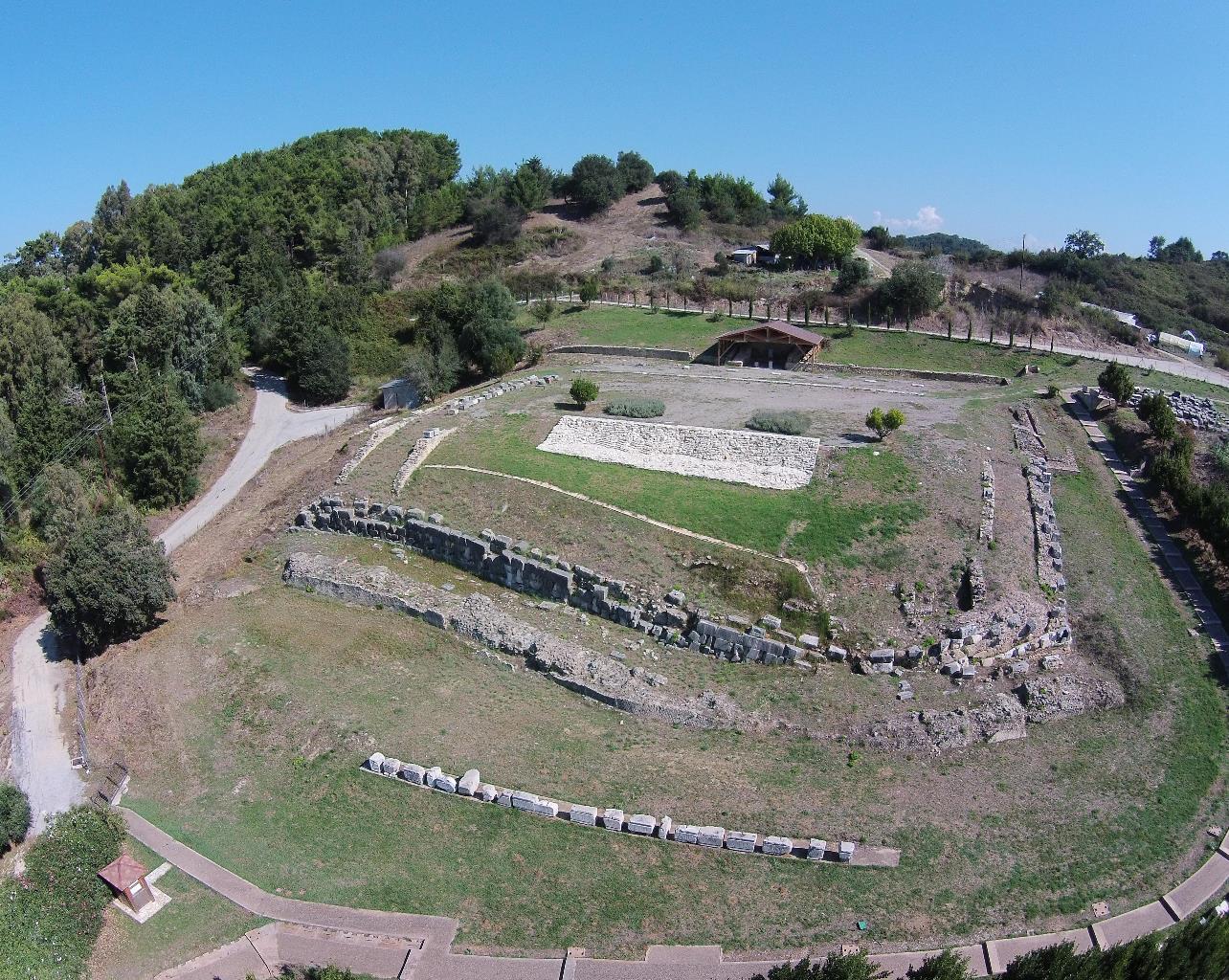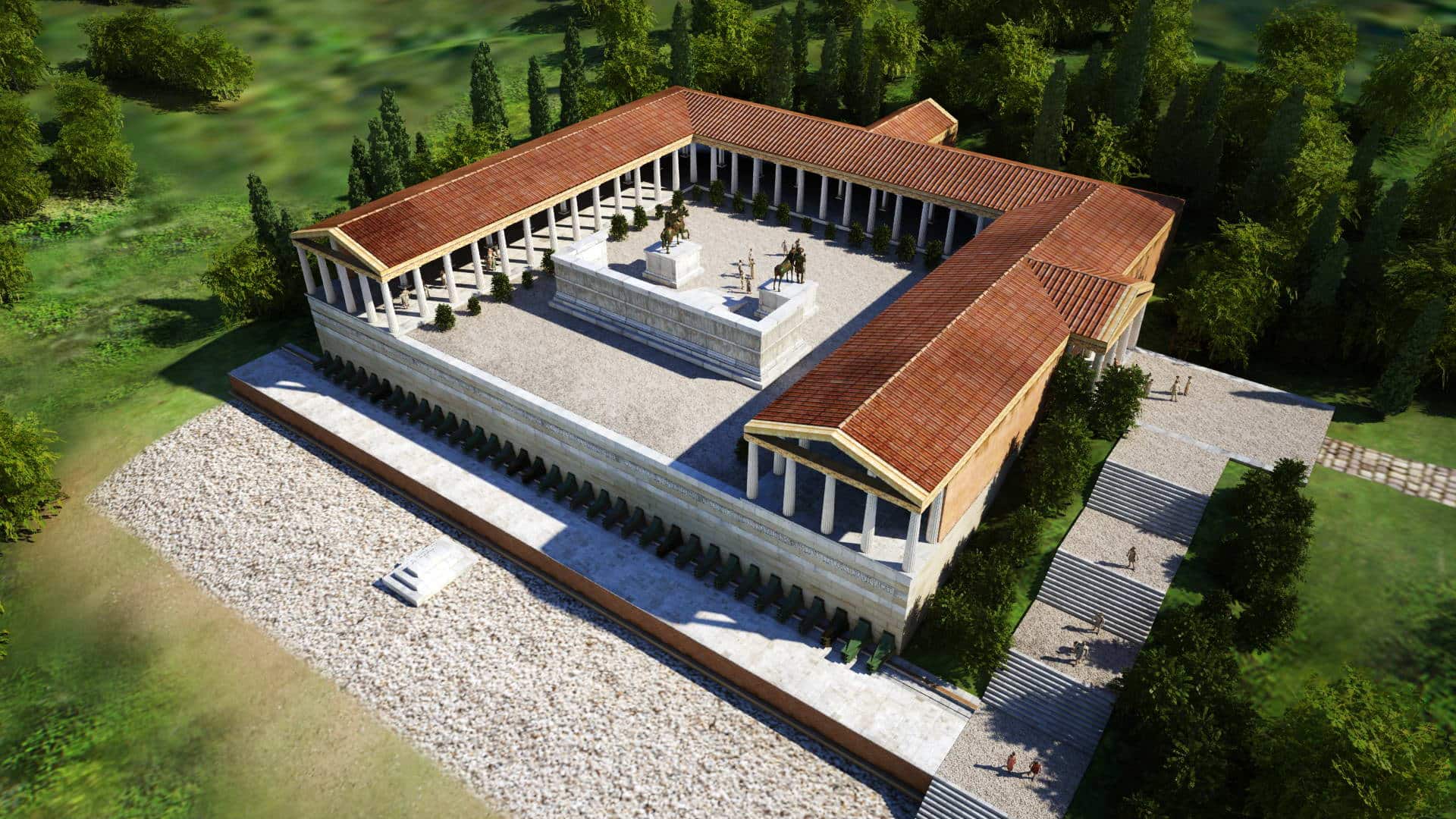The monument, which marked a watershed event in the history of the ancient world, is mentioned in only a few lines of the ancient authors Dio Cassius and Suetonius. The architectural composition of the Trophy-Victory Monument hints at divine intervention in the naval battle’s outcome and at the ruler’s piety.
The complex extended amphitheatrically on two artificial levels over the slopes of the hill, where Augustus camped during the naval battle of Actium. On the lower level rose two parallel retaining walls, today in a ruinous state. Above the wall’s euthynteria are preserved anchor-shaped carvings into which the brass rams from the captured ships of Antony and Cleopatra were wedged (it is estimated there were a total of 36 rams). Higher up on the wall was the votive inscription of the monument, parts of which were found scattered throughout the area south of the retaining wall. The length of the inscription is calculated at about 54 meters. The text of the inscription is restored approximately thus:
“The Emperor Caesar, son of the divine Julius, following the victorious outcome of the war he waged for democracy in this region when he was consul for the fifth time and general for the seventh, and after the establishment of peace on sea and land, dedicated to Ares and Poseidon the camp from which he stormed against the enemy, which is now adorned with the spoils of ships”.
The retaining wall of the front of the monument, together with the vertical walls lost in the slope of the hill, shaped and provided counter-support like a podium to the second level, on which there was a Π-shaped porticus triplex with two rows of columns. The outer colonnade was Doric and the inner one, Corinthian. The portico’s walls were decorated with frescoes, with linear and vegetal motifs visible today.
The roofing consisted of Corinthian tiles, and a significant number of terracotta architectural members with relief decoration. On the long sides, the roof carried gutters (simas) with a relief of a lioness nursing the twins Romulus and Remus on either side of a waterspout in the form of a lioness’s head, or a representation of dolphins flanking a waterspout in the form of a dolphin’s head.
The center of the open space on the upper level was taken up by a monumental oblong altar from which the foundation is preserved. Thousands of marble fragments from the superstructure have been found around the foundation. Study of these fragments has shown that the altar was richly decorated. A short distance north of the altar and in a perfectly symmetrical relationship with it, the foundations of two square pedestals were found. On one of the pedestals, it is possible that the bronze statuary group of the donkey named Nikon and his drive Eutychos were erected. Octavian took his encounter with them at dawn on the day of the battle as a good omen (Plutarch, Antony 65.3).
Around the circumference of the atrium, the fragments of about thirty small vases, perforated at their base, were found. In Roman times, plants rooted in such vases (called ollae perforatae) were sold and transplanted into the ground together with their vases. Their symmetrical placement near the colonnades indicates the presence of an organized garden. The precinct’s sacred garden, like its monumental altar, would have been dedicated to Apollo, Augustus’s patron god.
In the 1st century AD, after the death of Augustus, a rectangular addition was built to the north side of the porticus. This area was in all probability devoted to the imperial cult (Aedes Augustalium).






